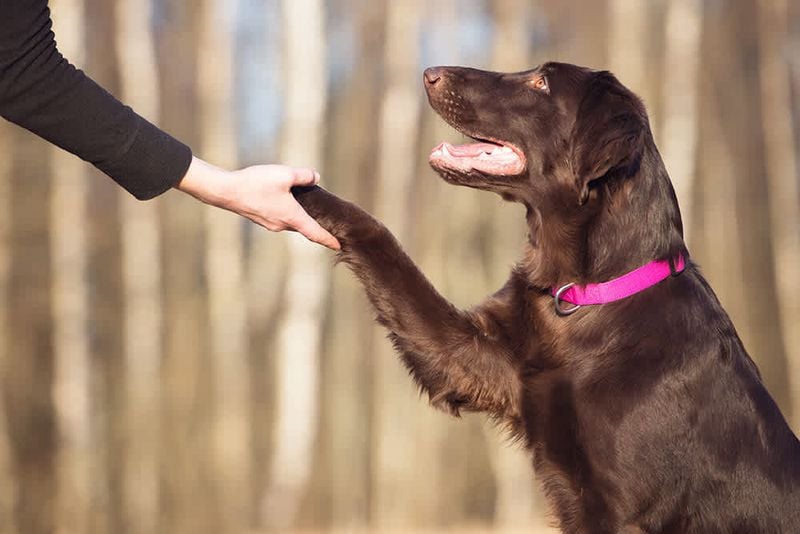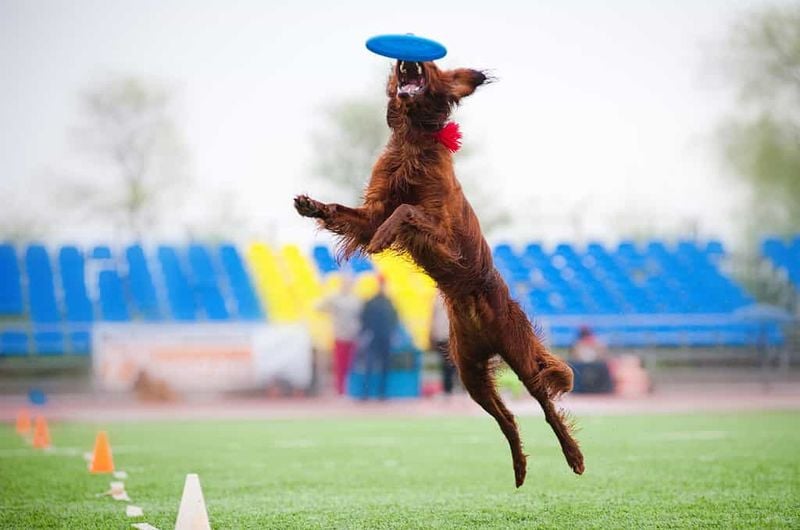14 Major Differences Between Male and Female Dogs Every New Owner Should Know
Thinking about adopting a dog? One of the first questions people often overlook is whether to choose a male or a female.
While loveable in their own ways, male and female dogs can differ more than you might expect. These differences go far beyond size or appearance.
They can affect training, behavior, energy levels—even how your new pup interacts with other pets or family members. Knowing what to expect can help you find the perfect match for your home and lifestyle.
Whether you’re a first-time dog owner or adding a new member to your pack, understanding these distinctions is essential.
This guide will walk you through the key differences between male and female dogs—so you can make an informed, heart-smart decision before bringing home your new best friend.
1. Temperament Tendencies
One of the most noticeable differences between male and female dogs is their temperament. Males often crave attention and can be goofy or playful even as adults.
They may be more likely to follow you around the house or seek out cuddles at every opportunity. On the other hand, females tend to mature emotionally faster and can be a bit more independent.
That doesn’t mean they aren’t affectionate—just that their love is sometimes shown on their own terms. Females may prefer short bouts of closeness followed by solo time, while males are more persistent in their desire to be near their humans.
These tendencies vary by breed and upbringing, but understanding this general pattern can help you choose a dog whose personality meshes better with your daily rhythm and emotional needs.
2. Maturity Rate
If you want a pup that settles into adulthood quickly, female dogs tend to have the edge. They usually mature faster than males, both emotionally and mentally.
This can make early training sessions more successful, especially during puppyhood, when attention span and focus are limited resources.
A female might grasp house rules and commands a little quicker, while a male of the same age may still be clowning around and testing boundaries.
This doesn’t mean males can’t be trained—it just requires more patience and consistency early on. For first-time owners or families with children, this faster maturity in females might be a welcome advantage.
But if you’re seeking a fun-loving, energetic companion who stays young at heart for longer, a male may be just the kind of dog that fits your lifestyle best.
3. Territorial Behavior
Territorial instincts are often more pronounced in male dogs, particularly if they haven’t been neutered. They’re more likely to mark their space both inside and outside the home, especially when other animals are around.
This marking behavior can be frustrating for some owners, though it often decreases after neutering.
Females may still exhibit territorial tendencies, but typically in a less overt or persistent way. They’re usually more selective when it comes to establishing boundaries and might react only if they feel genuinely threatened.
Males, however, can be more proactive, especially around other males, resulting in barking, posturing, or even minor scuffles. If you live in a multi-pet household or near other dogs, understanding these tendencies can help prevent issues.
Training and early socialization can mitigate territorial behavior in either sex, but males may require more consistent reinforcement over time.
4. Affection Styles
While both male and female dogs are capable of deep love and loyalty, the way they express that affection can feel different. Male dogs often wear their hearts on their sleeves, seeking physical closeness and attention more frequently.
They might jump into your lap, follow you everywhere, or push their heads into your hands for belly rubs.
Females, although affectionate, can sometimes be a bit more reserved. They might prefer being near you without necessarily being on top of you.
Some owners describe them as having a “softer” emotional presence—quietly loyal, subtly connected.
Of course, much depends on individual temperament and training, but if you’re looking for a constant shadow and a cuddly companion, a male might meet that need.
If you prefer a dog that bonds deeply yet respects your space, a female could be a better fit.
5. Training Focus
When it comes to training, female dogs are often praised for being quicker to pick up commands, especially in their younger months.
They tend to have better focus and shorter rebellious phases, which can be a huge advantage for first-time dog owners or those eager to establish good manners early on.
Males, while intelligent and fully capable of learning, might take a bit longer to settle into serious training. Their playful or distracted nature can make sessions more of a challenge—but also more entertaining.
That said, once a male dog matures, he often becomes just as responsive and willing to please. The key with either sex is consistency, patience, and reward-based methods.
If early training success is a high priority for you, a female might give you a head start without sacrificing long-term potential.
6. Heat Cycles vs. Testosterone
One of the biggest biological differences comes down to hormones. Unspayed females go into heat about twice a year, during which they’ll attract male attention and may act anxious, clingy, or restless.
Managing a dog in heat can be messy and requires extra attention, especially if unneutered males are nearby.
Males, on the other hand, don’t cycle—they’re always hormonally “on” unless neutered. This can lead to roaming, mounting, or aggressive behavior around other males, particularly if they sense a nearby female in heat.
While spaying and neutering eliminate most of these issues, it’s something every dog owner should plan for.
If you’re adopting a puppy and undecided about sterilization, understanding the realities of hormone-driven behavior can save you frustration.
The choice between male and female often comes down to which of these natural cycles feels easier for your household to manage.
7. Size Differences
In most breeds, males are larger than females, sometimes by a noticeable margin. This can include not just height and weight, but also bone structure and muscle mass.
If you’re considering a breed known for its size or strength, this sex-based difference might influence your decision.
Larger dogs may require more food, stronger leashes, and firmer handling, which could be a concern for smaller or elderly owners.
Conversely, if you’re seeking a dog that’s more manageable in size for travel or apartment living, a female may be the better choice.
Size doesn’t always dictate personality, but it can affect how easy a dog is to lift into the car, bathe in the tub, or walk on a leash. For multi-dog homes, you may also want to consider size dynamics when introducing a new pet to the pack.
8. Risk of Certain Health Issues
Both male and female dogs are prone to specific health risks based on their sex. Female dogs that aren’t spayed face the potential for uterine infections (like pyometra) and mammary tumors, which can be life-threatening if not treated early.
Unneutered males, meanwhile, are at risk for prostate problems and testicular cancer. While spaying and neutering dramatically reduce or eliminate these risks, some owners delay the procedures or choose to avoid them altogether.
It’s important to understand that the decision to keep a dog intact comes with long-term health considerations. Even with routine veterinary care, certain conditions are more likely depending on the dog’s sex.
This makes proactive health planning an essential part of adoption. If you’re concerned about future vet bills or surgeries, knowing these risks can help you prepare—or choose the sex that better fits your comfort zone.
9. Sociability with Other Dogs
Social dynamics between dogs can vary widely, but there are some trends worth noting.
Female dogs may be more selective in their friendships, particularly with other females. While they can get along just fine in multi-dog households, tensions can arise if personalities clash—especially as they mature.
Males, on the other hand, are often more eager to mingle and may tolerate a wider range of canine personalities. That said, unneutered males are more likely to challenge other males, especially in the presence of a female in heat.
Much of this depends on early socialization, training, and whether the dog has been fixed. If you already have a dog at home, the sex of your new addition could impact harmony.
Many trainers suggest pairing opposite-sex dogs in the same household to reduce competition and make bonding smoother from the start.
10. Dominance Hierarchies
In multi-dog homes, understanding canine hierarchy is key—and sex plays a role in how dogs establish rank. Male dogs, especially those that are unneutered, may be more inclined to challenge for dominance.
This can show up as posturing, growling, or attempts to assert control over shared spaces and resources.
Females, while not exempt from hierarchy struggles, often assert themselves in quieter or more strategic ways. They may be less physically aggressive but more emotionally assertive, especially around food or territory.
If you’re planning to bring a new dog into a household that already includes dogs, you’ll need to consider how each animal might respond. Neutering and spaying can reduce dominance-related behaviors, but they won’t eliminate personality clashes.
Choosing a dog whose energy level and gender complement your current pets can prevent future power struggles.
11. Activity Level
While individual energy levels vary, male dogs are often described as having a more consistent, high-energy vibe—especially during their first few years.
They tend to remain playful and active longer, sometimes retaining puppy-like behavior well into adulthood.
Female dogs generally settle down earlier, which can be a relief for owners looking for a calmer companion. They may still enjoy play, but they’re also more content with rest and routine as they mature.
This difference is subtle but noticeable, especially if you’re choosing a dog to match your activity level. A male might be better suited for an athletic owner or a family with children who enjoy lots of playtime.
A female may be ideal for someone who values balanced energy—playful but not overwhelming. Knowing what you’re looking for in a dog’s day-to-day behavior can help guide the right choice.
12. Bonding Preferences
The belief that male dogs bond more strongly with women and female dogs with men has some anecdotal support, though it’s far from universal.
Some owners report that male dogs tend to form intense attachments, often favoring one person in the household and becoming their shadow.
Female dogs might spread their affection more evenly or take longer to warm up, but they still develop deep, meaningful bonds.
They may simply express it with more subtlety—like following at a distance or gently checking in rather than smothering you with kisses. Ultimately, bonding depends on the dog’s personality and how they’re treated.
Early socialization and shared experiences are far more powerful than gender alone. Still, if you’re hoping for a dog that instantly picks “their person,” a male may be more likely to form that intense one-on-one connection right away.
13. Mounting Behavior
Mounting isn’t just a male thing—both sexes may do it—but unneutered males are the most frequent offenders.
It’s not always sexual; mounting can also be a sign of excitement, stress, or an attempt to establish control, especially in social settings with other dogs.
That said, male dogs are more likely to mount persistently and in a wider variety of situations. This behavior can be awkward or misunderstood, particularly when directed at guests, other pets, or even furniture.
Spaying and neutering usually reduce mounting, though it can still occur from time to time. Females might mount during heat cycles or as a social gesture, but it tends to be less common and less intense.
If you’re concerned about unwanted behaviors or public embarrassment, knowing the hormonal triggers and managing them through early training can make a big difference.
14. Recovery from Surgery
Spaying a female dog is a more invasive procedure than neutering a male. It involves internal abdominal surgery, which comes with a longer recovery time, a higher cost, and slightly more risk.
After surgery, females need extra care to ensure they don’t reopen stitches or get infections.
Male dogs, on the other hand, usually recover from neutering in just a few days. The procedure is quicker and less intensive, which means fewer restrictions and faster healing.
This difference might influence your adoption decision if you’re planning to sterilize your new pet. Keep in mind that long-term health and behavioral benefits often outweigh the short-term hassle.
Still, if you’re not ready for the demands of post-op care, especially for a female, it’s something to factor in. Preparing for surgery and knowing what recovery looks like can make the process smoother for both you and your dog.




















